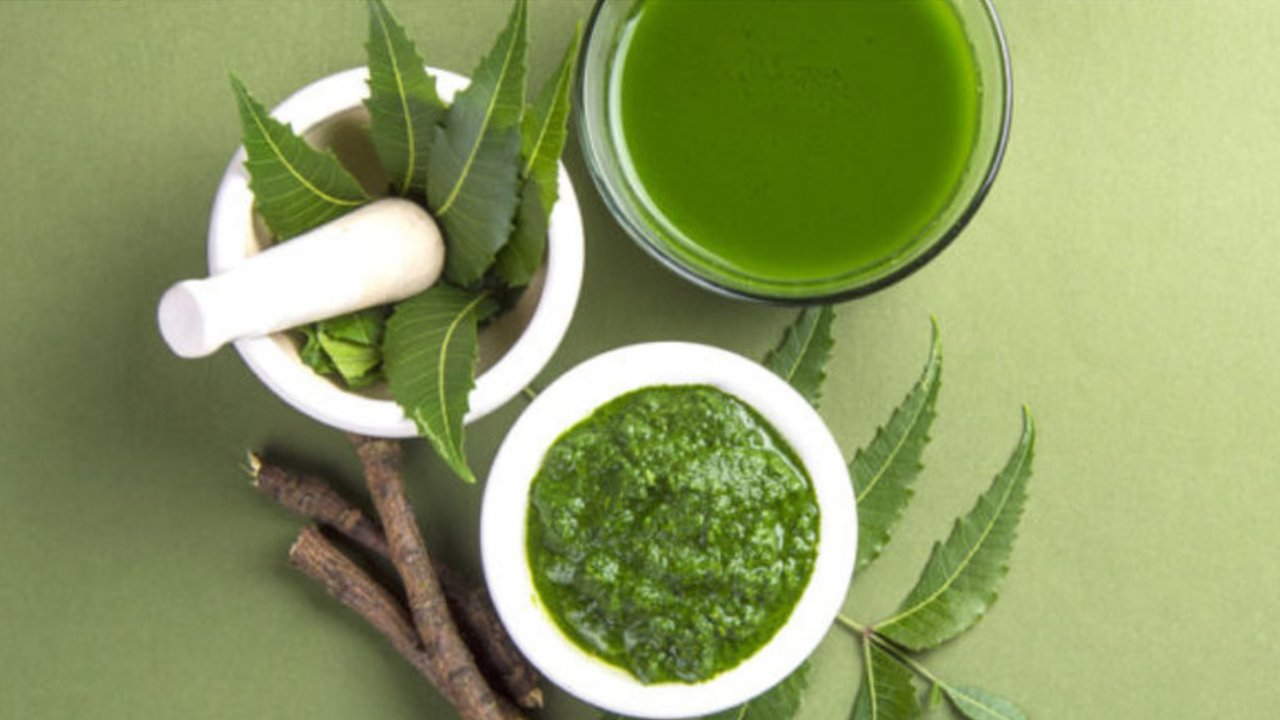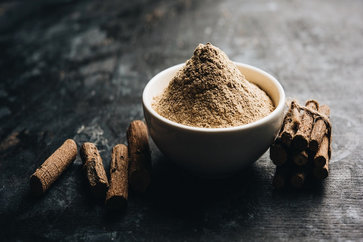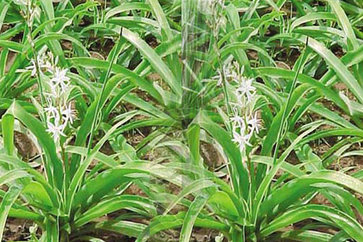Top 10 Medicinal Uses of Neem: Benefits of Leaves, Oil & Bark
The medicinal uses of neem have long been recognized in Ayurveda. In Sanskrit, the neem tree is referred to as Aristha, Sarvatibhadra, Subhadra, Sutikta, and more, with the scientific name Azadirachta indica. Native to India, the neem tree is often called the “wonder tree” due to its wide range of therapeutic properties.
Its leaves, bark, and oil have been used for centuries to treat various ailments, from ancient times to the present day. Even today, the neem tree is highly revered and widely used, especially in India, for its exceptional medicinal benefits. It offers a broader range of uses than any other known herb.
The use of neem dates back over 4,500 years in ancient Indian culture, particularly within Ayurveda. In the ancient Sanskrit text Charaka Samhita, neem is described as a tree that keeps all diseases at bay (sarva roga nivarini) or a reliever of disease (arishtha).
For centuries, ancient Indian physicians (Vaidyas) incorporated neem into their remedies due to its vast array of healing properties. Thanks to its remarkable effectiveness and minimal side effects, neem became known as the “village pharmacy,” earning a place as one of nature’s most valuable healing agents.
Neem Indian Names
- Bengali: Nim, Nimgachh
- Gujarati: Leemdo
- Hindi: Neem
- Konkani: Beva-rooku
- Kannada: Bevinmar, Kahibevu
- Marathi: Kadunimb
- Malayalam: Veppu, Aryaveppu, Aruveppu, Kaippan, Veppu, Vepa
- Oriya: Nimo
- Punjabi: Nimb
- Sinhalese: Nimu
- Telegu: Vepa
- Tamil: Vembu, Vempu
Neem Other Names Around The World
- Arabic: Azad Darkhtu Hind
- Burmese: Tamabin, Kamakha
- English: Neem, Indian Lilac, Margosa
- French: Margousier, Azarirae d’lnde
- Farsi: Azad darkht
- German: Indischer Zadrach
- Indonesia: Mindi
- Latin: Azadirachta indica A. Juss or Melia Azadirachta Linn
- Malay: Baypay, Dawoon Nambu
- Nigeria: Don goyaro
- Nepal: Nim
- Portuguese: Margosa, Nimbo
- Persian: Azade Darakhte Hindi
- Singapore: Kohumba, Nimba
- Spanish: Margosa
Neem Tree Information
The Neem tree belongs to the Mahogany family, and its appearance is similar to the China-berry tree. Commonly known as “Nimtree” or “Indian Lilac” in English, it is native to Asia, with abundant growth in India, Bangladesh, Pakistan, and Burma. Here’s more information on the neem tree, its characteristics, and how it looks.
1. Neem Tree
The neem tree grows rapidly and typically reaches a height of 15 to 20 meters, although it can grow as tall as 35 to 40 meters under optimal conditions. It is an evergreen, but during dry seasons, it may shed some or even all of its leaves. The tree has a wide-spreading canopy, moderately dense and rounded, with a diameter that can extend up to 15 to 20 meters. The neem tree resembles the Chinaberry tree in appearance.
2. Neem Leaves
- Leaves: The leaves of the neem tree grow oppositely along the branches and have a feather-like appearance, measuring about 20 to 40 centimeters in length. They consist of 20 to 31 leaflets, which are medium to dark green, ranging from 3 to 8 centimeters long. The terminal leaflets are often absent, and the petioles are short.
- Flowers: The neem tree produces white aromatic flowers arranged in loose, branching clusters that can grow up to 25 centimeters long. A branch may bear from 150 to 250 flowers. Each flower measures about 5 to 6 millimeters long and 8 to 11 millimeters wide. The flowers are protandrous and ambisexual, with male and female flowers present on the same tree.
3. Neem Fruit
- Fruit: The fruit of the neem tree is a smooth, olive-like drupe, varying in shape from elongated oval to nearly round. When ripe, the fruit measures about 1.4 to 2.8 cm long and 1.0 to 1.5 cm wide. The outer skin is thin, and the inner pulp has a bitter-sweet taste, yellowish-white in color, and is very fibrous.
- The middle layer of the fruit’s pericarp is 0.3 to 0.5 cm thick, while the innermost layer, the endocarp, is white and hard, with a brown seed coat.
Neem is a versatile and resilient tree, with each part offering unique medicinal and ecological benefits.
Top 10 Medicinal Uses Of Neem
Medicinal use of neem trees has been used for over two millennia in India for their therapeutic properties. The products of the Neem tree have been used in Siddha medicine, which is one of the oldest medical methods known to the human race. As per the textual and archeological evidence, its origin goes back 10,000 B.C. to 4,000 B.C.
Later; it was used in Unani medicine and Ayurveda which are believed to be a branch of it. The physician (Vaidya) believed neem products have antifungal, Anthelmintic, antibacterial, antiviral, diabetic, sedative, and contraceptive properties, below are a few of the neem tree uses and 10 medicinal uses of neem plant in points
1. Boosts the Immune System
Neem is known for its ability to strengthen the immune system. It helps the body combat infections before the immune system needs to activate. Neem encourages the formation of T-cells, which are crucial for fighting harmful bacteria. Unlike antibiotics, neem does not destroy beneficial bacteria, making it a non-toxic alternative to conventional antibiotics, which often come with harmful side effects.
2. Improves Hair Growth
Neem is an effective remedy for promoting hair growth. Applying organic neem oil to the scalp can address scalp conditions like dandruff, scaling, and even hair loss. Neem helps regulate sebum production, preventing clogged pores that can cause hair thinning. Its antimicrobial and immune-boosting properties stimulate blood flow to the scalp, nourishing hair follicles for thicker, longer, and healthier hair.
3. Improves Oral Health
Neem has been used for centuries in Ayurveda for oral health. Its oil contains essential vitamins and fatty acids, making it an excellent natural remedy for conditions like tooth decay, mouth infections, sore gums, and bleeding gums. Neem bark powder also has natural antimicrobial properties, helping to whiten teeth, freshen breath, and reduce bacteria that contribute to cavities and gum disease.
4. Improves Skin Conditions
Neem’s antibacterial properties make it highly effective for treating chronic skin conditions. Neem can help treat acne, eczema, psoriasis, warts, and ringworm. Organic neem oil is also used in cosmetics to revitalize and beautify the skin, offering a natural, side-effect-free alternative to harsh medications that can cause irritation and allergic reactions.
5. Controls Diabetes
Neem has long been used in Ayurveda to manage diabetes. It helps lower blood sugar levels, particularly in type 2 diabetes patients. Neem is one of the safest medicinal herbs for controlling glucose levels, with studies showing it can reduce insulin requirements by up to 50% without causing any adverse effects.
6. Prevents Stomach Ulcers
Neem has been used traditionally in India to treat stomach ulcers. Its anti-inflammatory properties help reduce irritation and pain caused by conditions like gastritis. Neem’s astringent and antimicrobial effects also protect the stomach lining, preventing ulcers from worsening and promoting faster healing.
7. Helps in Wound Healing
Neem oil is commonly used for healing minor skin injuries such as abrasions, bruises, cuts, and scratches. Its anti-inflammatory, antibacterial, antifungal, and antiviral properties promote rapid healing and reduce the risk of infection. Neem’s high nutrient content also aids collagen formation and the regeneration of new tissues and capillaries, helping wounds heal quickly and effectively.
8. Prevents Heart Disease
Neem is beneficial for heart health, as it helps reduce blood pressure, cholesterol levels, and prevent blood clots. The leaves of the neem tree are effective in managing heart irregularities due to their antihistamine effects, primarily attributed to a compound called Nimbin. Regular neem use can contribute to better cardiovascular health.
9. Kills Intestinal Worms
Neem has been used for centuries to treat intestinal worms caused by poor hygiene or contaminated food and water. Its anti-parasitic properties help eliminate parasites, fungi, and viruses. Modern research has confirmed neem’s effectiveness in killing harmful organisms, detoxifying the body, and promoting overall digestive health.
10. Stops the Growth of Cancer Cells
Studies have shown that neem may help prevent or treat cancer. Neem leaves contain compounds like beta carotene, antioxidants, azadirachtin, and nimbolide, which are believed to help combat cancer cells. Research conducted on cancer cells and animals has highlighted neem’s potential as a complementary treatment for cancer, offering a natural approach to cell protection and healing.
Neem’s versatility in treating a wide range of conditions makes it an invaluable part of traditional and modern medicine alike.
Useful Part Of The Neem Tree
The neem tree is referred to as the “Miracle Tree,” it is because of its tremendous curative properties. It is an important herb of Ayurveda; it had been very well described neem tree benefits, uses of neem, and how all parts of neem trees are used for medicinal purposes such as neem leaves extracts, bark, twigs, flowers, seeds, and neem oil.
1. Uses of Neem Bark in Ayurveda
There are many uses and benefits of Neem bark, According to Ayurveda neem, the bark is cool in nature, bitter in taste, has astringent properties, and is used for Kapha Dosha imbalance. Traditionally, neem bark powder or neem bark extract is used to treat many ailments. Below are some of the uses of neem bark.
1. Worms: Neem bark is known to have anti-parasitic properties, helping to expel worms or parasites from the body.
2. Fever: Due to its cooling properties, neem bark can help reduce fever and promote overall wellness.
3. Loss of Appetite: It may stimulate the digestive system and encourage appetite, particularly if it’s linked to digestive issues.
4. Wounds: Neem bark has antibacterial and anti-inflammatory properties, making it useful for treating minor wounds and promoting healing.
5. Cleaning Teeth: The bark is commonly used in Ayurvedic toothpaste or powders for its ability to clean teeth, reduce plaque, and combat dental problems.
6. Bleeding Gums: Its astringent and antibacterial properties help control bleeding and infection in the gums.
7. Tooth Decay: Neem’s antibacterial action helps to prevent tooth decay and promote overall oral hygiene.
8. Foul Smell: Its antimicrobial properties can help eliminate bad breath and oral odor.
9. Birth Control: Neem bark has been used traditionally as a natural contraceptive by inhibiting sperm mobility and preventing conception.
10. Skin Diseases: Neem bark is effective in treating skin infections, acne, eczema, and other inflammatory skin conditions.
11. Ulcers: Its healing properties are beneficial in treating ulcers, especially those in the digestive system.
12. Gastrointestinal Problems: Neem bark is used to treat a variety of digestive disorders, such as indigestion and diarrhea.
13. Conception: While it’s historically been used for its contraceptive effects, some studies suggest that neem bark may also have a role in supporting reproductive health.
14. Hyperglycemia: It has been traditionally used to manage blood sugar levels, making it a useful herb for individuals dealing with diabetes or those at risk.
Neem bark’s versatility makes it a great addition to many natural remedies and health routines. However, it’s always important to use it with care, particularly in cases of internal consumption, to avoid any adverse effects.
2. Uses of Neem leaves in Ayurveda
There are many uses for neem leaves, According to Ayurveda neem leaf works wonderfully as a beauty product as it is very effective in curing most skin-related issues. Below are some of the uses of neem leaves
1. Eczema: Neem leaves have anti-inflammatory and soothing properties that can help alleviate symptoms of eczema, reducing itching and irritation.
2. Ringworm: The antifungal properties of neem leaves are effective in treating ringworm and other fungal skin infections.
3. Acne: Neem leaves can be used to combat acne due to their antibacterial and anti-inflammatory effects. They help cleanse the skin and prevent breakouts.
4. Wounds: Neem leaves speed up the healing process of minor cuts and wounds by promoting tissue regeneration and preventing infection.
5. Ulcers: The antimicrobial and healing properties of neem leaves can aid in the treatment of ulcers, particularly on the skin or in the digestive system.
6. Skin Cleanser: Neem leaves act as a natural cleanser for the skin, helping to remove impurities, toxins, and excess oils while keeping the skin clear and refreshed.
7. Blood Purifier: Consuming neem leaves helps purify the blood, removing toxins and promoting better overall health.
8. Hair Conditioner: Neem leaves are often used in hair care products because they help condition the hair, improve its texture, and prevent hair damage.
9. Anti-Dandruff: Neem leaves are effective in treating dandruff, as they have antifungal and antibacterial properties that help combat scalp infections and flakiness.
10. Eye Cleansing: Neem leaves have been used traditionally to soothe the eyes and relieve irritation or redness, acting as a natural eye cleanser.
11. Immune Booster: Neem leaves help strengthen the immune system by boosting the body’s natural defenses, preventing infections and promoting overall well-being.
Neem leaves are a powerful and versatile natural remedy for beauty, skin care, and general health. As with neem bark, it’s always important to consult with a healthcare professional, especially when using it internally, to ensure safety and effectiveness.
3. Uses of Neem oil in Ayurveda
There are many uses for neem oil, neem oil is obtained by crushing the seeds, just like the leaf’s neem oil is also used to treat most skin-related problems. Below are some of the neem oil uses.
1. Skin Cleanser: Neem oil acts as a gentle cleanser, helping to remove dirt, oil, and impurities from the skin while providing nourishment and hydration.
2. Mosquito Repellent: Neem oil is an excellent natural insect repellent, particularly effective against mosquitoes. It can be applied to the skin or used in sprays to keep bugs away.
3. Skin Toner: The oil’s antibacterial and astringent properties make it a great toner, tightening the skin and promoting a clear complexion.
4. Itching: Neem oil is a natural remedy for itching caused by insect bites, allergies, or dry skin. It calms irritation and provides relief due to its anti-inflammatory properties.
5. Natural Shampoo: Neem oil can be used in hair care routines to help cleanse the scalp and treat conditions like dandruff and scalp dryness. It also conditions the hair.
6. Dandruff: Due to its antifungal properties, neem oil is effective in combating dandruff and flakiness, promoting a healthy scalp.
7. Relieves Irritation: Neem oil can help soothe skin irritation, redness, or inflammation caused by conditions like eczema or psoriasis, offering a cooling effect.
8. Hair Growth: Neem oil promotes healthy hair growth by nourishing the scalp, stimulating blood circulation, and preventing hair loss.
9. Head Lice: Neem oil has been used for centuries as a natural treatment for head lice, effectively killing and repelling lice without harmful chemicals.
Neem oil is a powerful and versatile addition to your beauty and health routine, thanks to its antimicrobial, antifungal, and anti-inflammatory properties. As with any concentrated natural product, it’s important to patch-test neem oil before full use to ensure there’s no skin sensitivity.
Whether in the form of leaves, oil, or bark, neem continues to play a crucial role in enhancing overall health and well-being. Incorporating neem into your wellness routine can offer a natural and effective alternative to many conventional treatments.
Resources:
- Neem components as potential agents for cancer prevention and treatment(1)
- Neem: A Tree For Solving Global Problems.(2)
- An overview of Neem (Azadirachta indica) and its potential impact on health(3)
- Therapeutics Role of Azadirachta indica (Neem) and Their Active Constituents in Diseases Prevention and Treatment(4)
- Potential benefits of phytochemicals from Azadirachta indica against neurological disorders(5)


























Neem oil is loaded with nutrients! It’s anti-fungal, antiviral, anti-inflammatory, anti-aging, antibacterial and, naturally, insect repelling!